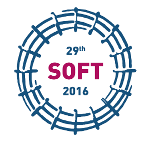Speaker
Miao Nie
(Key Laboratory of Neutronics and Radiation Safety)
Description
The high reliability and availability of Tritium extraction system (TES) will be needed is necessary for safety operation of circulation and processing of tritium purge gas. Reliability, availability, maintainability, inspectability (RAMI) analysis of the TES should be performed during the design and operation phase. Since there is no TES failure rate data available from fusion operating experiences. Therefore, it is necessary to use the existing component operating experiences to calculate component failure rates of the TES components.
In this paper, a combinational method was used to adjust component failure rate of TES, based on k factors method and Bayesian method. The method consists of three procedures: 1) the general reliability data gained from the long-term operation in nuclear plants which was chosen as the basic failure data of components. 2) The calculation of each individual k factor was carried out according to the environments and conditions known to affect component reliability, including the operating temperature, the neutron radiation damage, the flow and flow media, the pressure and the vibration and so on. 3) The hyperparameters of failure distribution were calculated based on a Bayesian approach with a Jeffreys noninformative prior distribution.
The failure rate values of components were selected form the RiskA/RiskBase (Database Management System for Reliability Analysis) and FCFR-DB (Fusion Component Failure Rate Database).TES components failure rate were predicted based on the combinational method. And then the TES RAMI analysis was also performed based on these adjusted failure rates.
This paper introduced a combinational method, which could be applied to failure rates adjustment of advanced nuclear system components.
Co-authors
Fang Wang
(Key Laboratory of Neutronics and Radiation Safety, Institute of Nuclear Energy Safety Technology, Chinese Academy of Sciences, Hefei, Anhui, 230031, China, Hefei, Anhui, China)
Jiaqun Wang
(Key Laboratory of Neutronics and Radiation Safety, Institute of Nuclear Energy Safety Technology, Chinese Academy of Sciences, Hefei, Anhui, 230031, China, Hefei, Anhui, China)
Jin Wang
(Key Laboratory of Neutronics and Radiation Safety, Institute of Nuclear Energy Safety Technology, Chinese Academy of Sciences, Hefei, Anhui, 230031, China, Hefei, Anhui, China)
Leiming Shang
(Key Laboratory of Neutronics and Radiation Safety, Institute of Nuclear Energy Safety Technology, Chinese Academy of Sciences, Hefei, Anhui, 230031, China, Hefei, Anhui, China)
Miao Nie
(Key Laboratory of Neutronics and Radiation Safety, Institute of Nuclear Energy Safety Technology, Chinese Academy of Sciences, Hefei, Anhui, 230031, China, Hefei, Anhui, China)

